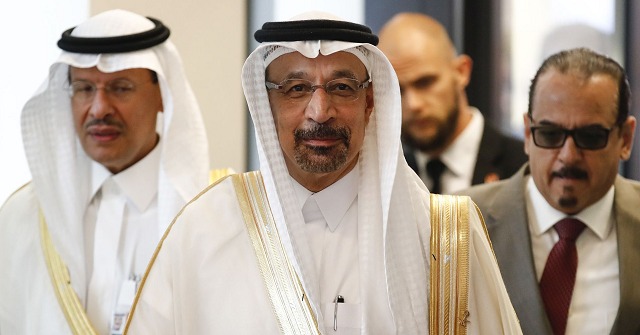Oil prices rose on Monday, lifted by comments from Saudi Energy Minister Khalid al-Falih that an end to OPEC-led supply cuts was unlikely before June and a report showing a fall in U.S. drilling activity.
U.S. West Texas Intermediate (WTI) crude oil futures were at $56.73 per barrel at 1320 GMT, up 66 cents, or 1.18 percent from their last close.
Brent crude futures were at $66.49 per barrel, up 75 cents, or 1.14 percent.
Falih told Reuters on Sunday it would be too early to change a production curb pact agreed by the Organization of the Petroleum Exporting Countries (OPEC) and allies including Russia before the group’s meeting in June.
“We will see what happens by April, if there is any unforeseen disruption somewhere else, but barring this I think we will just be kicking the can forward,” Falih said.
Oil markets have been supported this year by ongoing supply cuts by the group called OPEC+, which has pledged to cut 1.2 million barrels per day (bpd) in crude supply since the start of the year to tighten markets and prop up prices.
The group will meet on April 17-18, with another gathering scheduled for June 25-26, to discuss supply policy.
Further underlining the desire of the world’s top exporter to drive down prices, a Saudi official said the country planned to cut crude oil exports in April to below 7 million barrels per day.
Prices were also buoyed by U.S. energy services firm Baker Hughes’ latest weekly report showing the number of rigs drilling for new oil production in the United States fell by nine to 834.
But the Paris-based International Energy Agency predicted a surge in U.S. production, which would see its exports exceed Russia’s and near Saudi Arabia’s by 2024.
“The second wave of the U.S. shale revolution is coming,” the IEA’s Fatih Birol said.
“It will see the United States account for 70 percent of the rise in global oil production … with profound implications for the geopolitics of energy.”
Markets were held back after U.S. employment data raised concerns that an economic slowdown in Asia and Europe was spilling into the United States.
“Brent prices have struggled to push firmly above $65/bbl in part because a strong U.S. dollar remains a major headwind for commodity prices. In addition, global GDP growth has been soft and oil demand has yet to pick up seasonally,” Bank of America Merrill Lynch said in a report on Monday.
But citing the OPEC+ cuts and low global stocks, the bank predicted prices for Brent would reach $70 a barrel this year.














